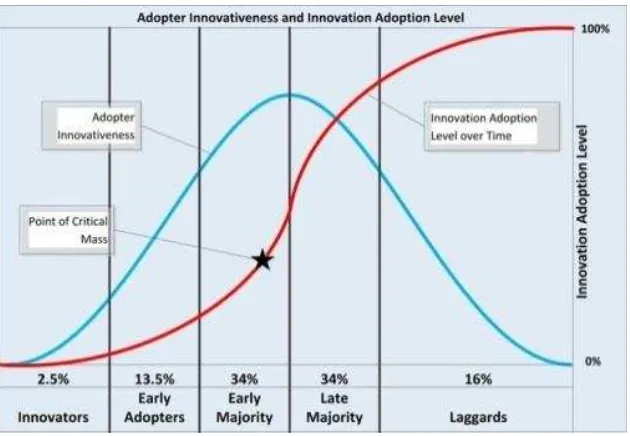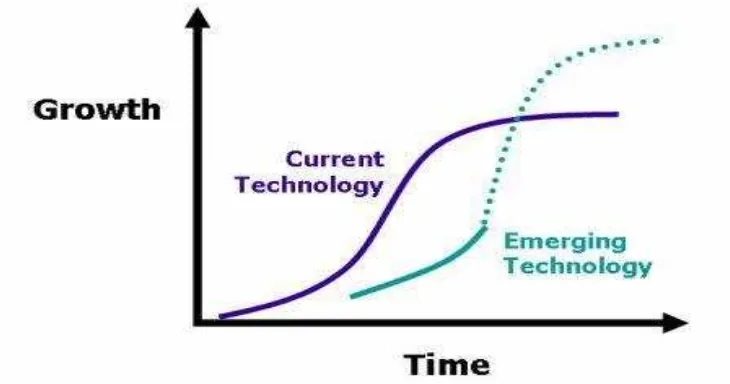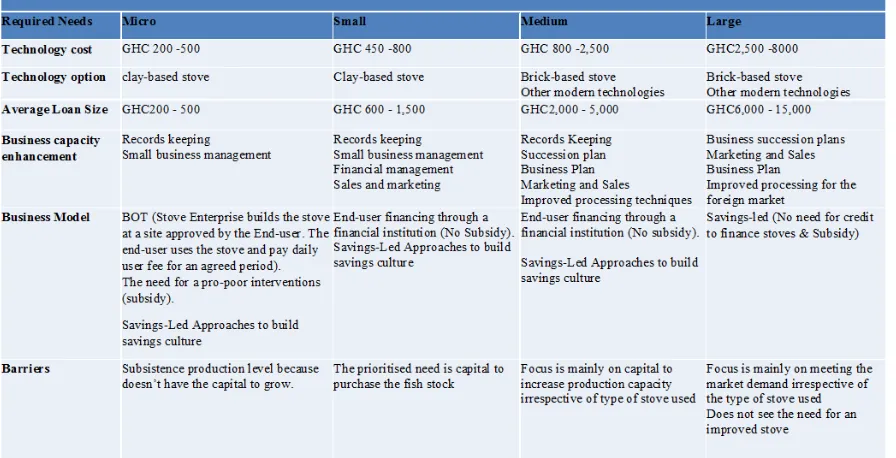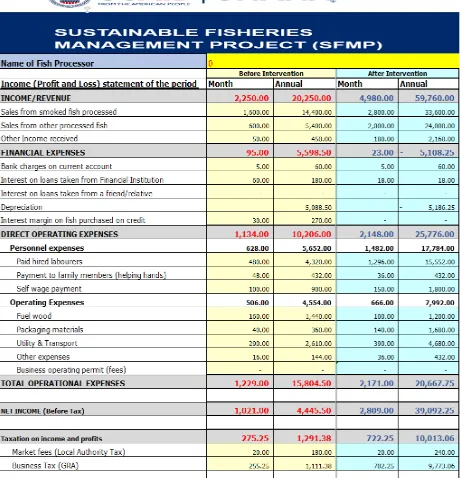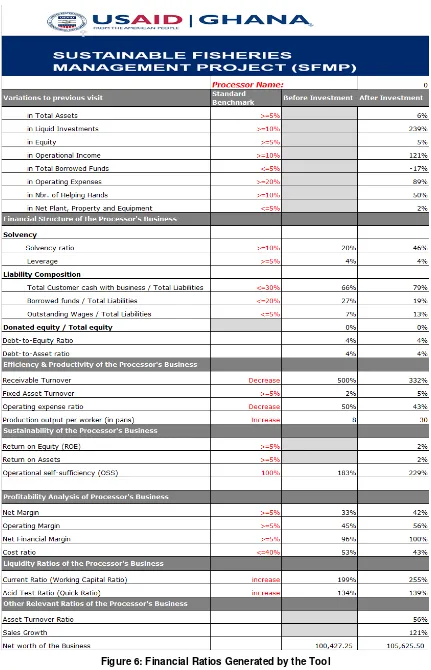SUSTAINABLE FISHERIES
MANAGEMENT PROJECT (SFMP)
Validation Workshop On Business
Model Options & Segmentation
Study Reports
This publication is available electronically on the Coastal Resources Center’s website at http://www.crc.uri.edu/projects_page/ghanasfmp/
For more information on the Ghana Sustainable Fisheries Management Project, contact:
USAID/Ghana Sustainable Fisheries Management Project Coastal Resources Center
Graduate School of Oceanography University of Rhode Island
220 South Ferry Rd.
Narragansett, RI 02882 USA
Tel: 401-874-6224 Fax: 401-874-6920 Email: [email protected]
Citation: Amaning, R. (2016). Validation Workshop Report on Business Model Options and Segmentation Study in Ghana. The USAID/Ghana Sustainable Fisheries Management Project (SFMP). Narragansett, RI: Coastal Resources Center, Graduate School of Oceanography, University of Rhode Island.
GH2014_ACT074_SNV. 13 pp.
Authority/Disclaimer:
Prepared for USAID/Ghana under Cooperative Agreement (AID-641-A-15-00001) awarded on October 22, 2014 to the University of Rhode Island and entitled; the USAID/Ghana Sustainable Fisheries Management Project (SFMP).
This document is made possible by the support of the American People through the United States Agency for International Development (USAID). The views expressed and opinions contained in this report are those of the SFMP team and are not intended as statements of policy of either USAID or the cooperating organizations. As such, the contents of this report are the sole responsibility of the SFMP Project team and do not necessarily reflect the views of USAID or the United States Government.
Detailed Partner Contact Information:
USAID/Ghana Sustainable Fisheries Management Project (SFMP) 10 Obodai St., Mempeasem, East Legon, Accra, Ghana
Telephone: +233 0302 542497 Fax: +233 0302 542498 Maurice Knight Chief of Party [email protected]
Kofi Agbogah Senior Fisheries Advisor [email protected] Nii Odenkey Abbey Communications Officer [email protected]
Bakari Nyari Monitoring and Evaluation Specialist [email protected] Brian Crawford Project Manager, CRC [email protected]
Justice Odoi USAID Administrative Officer Representative [email protected] Kofi.Agbogah
SNV Netherlands Development Organisation #161, 10 Maseru Road,
E. Legon, Accra, Ghana 233 30 701 2440
Donkris Mevuta Kyei Yamoah
[email protected] Friends of the Nation Parks and Gardens Adiembra-Sekondi, Ghana 233 312 046 180
Peter Owusu Donkor Spatial Solutions
[email protected] #3 Third Nautical Close,
Nungua, Accra, Ghana
Darkuman Junction, Kaneshie Odokor Highway
Accra, Ghana 233 302 315894
Gifty Asmah
[email protected] Daasgift Quality Foundation
Headmaster residence, Sekondi College Sekondi, Western Region, Ghana 233 243 326 178
For additional information on partner activities: CRC/URI: http://www.crc.uri.edu
CEWEFIA: http://cewefia.weebly.com/
DAA: http://womenthrive.org/development-action-association-daa Daasgift:
https://www.facebook.com/pages/Daasgift-Quality-Foundation-FNGO/135372649846101 Friends of the Nation: http://www.fonghana.org Hen Mpoano: http://www.henmpoano.org
SNV: http://www.snvworld.org/en/countries/ghana SSG Advisors: http://ssg-advisors.com/
ACRONYMS
CEWEFIA Central & Western Fish Mongers Improvement Association
CRC Coastal Resources Center
DAA Development Action Association
NAPFTA National Fish Processors and Traders Association SFMP Sustainable Fisheries Management Project
SNV Netherlands Development Organisation
TABLE OF CONTENTS
ACRONYMS ... iii
TABLE OF CONTENTS ... iv
LIST OF FIGURES ... iv
INTRODUCTION ... 1
WORKSHOP PROCEEDINGS ... 1
DAY 1: ACTIVITIES UNDERTAKEN ... 1
Welcome Address ... 1
Opening Remarks... 2
Presentation on the Segmentation Study findings ... 2
Preliminary Session ... 2
Presentation on the Investment Impact Tool ... 4
Closing ... 7
DAY 2: ACTIVITIES UNDERTAKEN ... 7
Opening ... 7
Presentation on the Business Model Options... 7
Preliminary Session ... 7
Workshop Closing Remarks ... 8
Closing ... 8
LIST OF FIGURES
Figure 1: Adopter innovativeness and innovation adoption level ... 1Figure 2: Adoption of new technology over time ... 2
Figure 3: The four groups brainstorming over the Study Results ... 3
Figure 4: Table of the Needs of the Various Segments of the Smoked Fish Processors ... 4
Figure 5: Investment Impact Tool, Financial Component ... 5
INTRODUCTION
SNV Netherlands Development Organization organized a 2-day validation workshop on the business model options and market segmentation study reports from 27th -28th April, 2016 at Erata Hotel, East Legon-Accra. The purpose of the validation workshop was to discuss the results of the business model options, segmentation study and validate the findings through brainstorming sessions as well as solicit the views of implementing partners and stakeholders in finalizing the report.
The validation workshop was well attended by the SFMP implementing partner organizations and stakeholders from stove enterprises, government and smoked fish processors. The
following organizations attended the validation workshop; Microfin Rural Bank, GRATIS Foundation, Best Performance Company, Food Research Institute, Morrison Energy, DAA, CEWEFIA, Fisheries Commission and the Smoked Fish Processors.
WORKSHOP PROCEEDINGS
DAY 1: ACTIVITIES UNDERTAKEN
The following activities were outline of activities for Day 1 of the validation workshop;
Welcome Address by SFMP Chief of Party
Purpose of Gathering by SNV Energy Sector Leader
Presentation on the findings of the Market Segmentation Study
Preliminary session on the segmentation study
Investment Impact tool
Welcome Address
Figure 1: Adopter innovativeness and innovation adoption level
Figure 2: Adoption of new technology over time
He indicated that innovation such as an improved fish smoking stove would take time to diffuse within a community before a full scale adoption can be achieved. He mentioned that for every community, there are innovators who would easily admit to change whereas the early majority would embrace the technology based on information regarding its benefits. He mentioned that the early majority class adoption of the desired technology is critical in a successful diffusion process. He wished participants the best and encouraged the participants to make contributions toward enriching the two reports. He commended the consultant for a great job.
Opening Remarks
James Robinson (SNV Country Energy Sector Leader) gave the opening remarks. In his remarks, he made a PowerPoint presentation on technology cost and financing. He mentioned that, the era of subsidy is over as a commercially viable on-lending with a socially inclined objective. This would ensure sustainability and upscale of improved cook stoves in Ghana. He used an analysis of total number of stoves to be constructed over the remaining 3 years of the project and made an indication that initiating an end-user financing model that recognizes the key role of financial institution in the provision of micro-credit will be instrumental in reaching scale.
Presentation on the Segmentation Study findings
The consultant, Richard Amaning presented the findings of the market segmentation study to the participants present at the workshop. He walked the participants through the purpose of the study and the methodology employed in undertaking the study. He outlined the study limitations and indicated that amidst the limitations, the study was successfully conducted in the Central and Western Regions of Ghana.
On the study findings he took the participants through the thematic areas outlining the socio-economic conditions under which the smoked fish processors operate their business as well as their challenges.
Preliminary Session
Fish Processors and Stove Enterprises. In each of the group, the various stakeholders were well represented. Each group was assigned a task of discussing and validating the study findings and then present their feedback.
Each group made a presentation on the outcome of their brainstorming session and shared their observations of the findings of the study. Key issues identified were; the need to have a standard conversion for cartons and pans, further analysis on the production volume based on the business working capital and the need to have more graphics in the report so the report could easily be assimilated by readers.
Figure 3: The four groups brainstorming over the Study Results
Figure 4: Table of the Needs of the Various Segments of the Smoked Fish Processors
Presentation on the Investment Impact Tool
The consultant gave a presentation on the investment impact tool which was a Microsoft excel template designed to assist SFMP implementing partners to undertake impact
assessment of project interventions targeted at smoked fish processors. It was mentioned that the tool is expected to be used by Project implementing partners to assess the level of
investment made into the operations and activities of Fish Processors within the fishing industry in Ghana. Emphasis was placed on the fact that, the primary objective of the tool is for the measurement and tracking of a stove user’s finances/business before and after the introduction of an intervention (e.g. Stove, training etc).
It was noted that the Investment Impact Tool (IIT) is in seven major components namely;
the business profile,
production capacity investment,
business management enhancement,
technological enhancement,
financial management
Human capital investment and
Closing
SFMP implementing partner institutions were given up to 5th May 2016 to provide their official feedback on the segmentation study report and the business model options. The consultant mentioned that beyond the 5th May deadline, feedback on the study results and the business model options would not be accepted.
The day ended with a closing prayer from one of the participants and the session was co-moderated by Emmanuel Aziebor and Richard Amaning (consultant). Benedicta Avega provided participants with information on administrative arrangements and logistics.
DAY 2: ACTIVITIES UNDERTAKEN
Opening
The second day started with an opening prayer which was said by one of the participants. The consultant immediately after the prayer took the participants through the recap of day one activities and outlined day two’s activities.
Presentation on the Business Model Options
The consultant made a 4-hour presentation on the business model options. His presentation touched on the market dynamics, the diamond business model and explained the roles of the actors’ identified in the diamond model.
He outlined the various business strategies that would complement the diamond business model in ensuring upscale of improved fish smoking stoves in Ghana. He explained the strategies and presented the various models within each of the strategies. On promotional strategy, he mentioned the SETH model as an effective model for promotion of improved fish smoking stoves. He also explained the various behaviour change communication models to complement the SETH in ensuring effective promotion of the improved fish smoking stoves. The following BCC models were discussed; Diffusion of innovation theory, ADKAR model, Health belief model, Theory of planned behaviour and positive deviance.
On marketing strategy, he explained that the social marketing approach as one of the key model to ensure upscale of the improved fish smoking stoves. He also took the participants through the financing strategy and explained the following end-user financing models; dealer financing, umbrella financing and inclusive financing.
On the pricing strategy, he mentioned that the document made recommendation on two pricing strategies namely; penetrative and bundle pricing.
He concluded with the recommendations in the documents.
Preliminary Session
The presentation on the business model options triggered and generated discussions among the participants. The participants went back to their groups and brainstormed on the business models and strategies outlined by the consultant.
The following were the key issues that were discussed;
The need to follow-up on training at the processor level
The need to strengthen the supply chains for the technology supply
Availability of the technology at the local level is essential in ensuring adoption
Capacity of the stove should be considered by the stove builders after realizing the demand
The need to modify the technology based on feedback from the clients/end-users
The project must ensure the establishment of demonstration sites to show case the stove technologies available at the local level
Rate of failure of technology is more when ownership is ignored especially with community owned facilities/stoves.
Risk of investing in a new technology by the stove users/end users as perceived by the stove builders
Response time in responding to stove defects and technological upgrades is essential in sustaining adoption rate
End-user training must be ensured and should be undertaken on a continuous basis by the stove builders.
The beneficiaries of the demo stove must be selected based on their ability to influence other people. Change agents must be natural leaders.
Stove builders must use well-seasoned woods for the processing trays to avoid bends and other defects
The need to explain PAH in its simplest form for the average smoked fish processor to understand. It will be ideal to have a local name for PAH.
To need for NAFPTA to consider the establishment of a credit union to facilitate savings and micro-credit.
The need to consider the village savings and loans concept for rural communities where there are no financial institutions operating within that area.
NAFPTA technical advisor suggested that the FRISMO should also be promoted and informed of another stove designed in Nigeria which is similar to a bread baking oven.
Brian stressed that SFMP is not concerned with stove that produces fish for export but rather simple technologies that would be affordable to the processors.
Workshop Closing Remarks
Dr. Brian Crawford (SFMP Chief of Party) gave the closing remarks. In his address, he thanked the participants for the excellent feedback on the segmentation study and the
business model options report. He tasked the SFMP implementing partners to critically think through the business model options and strategies and decide on the strategy to adopt. He indicated that the diffusion of innovation theory is a very good model which would ensure that any choice of technology promoted by the stove builders and implementing partners would diffuse within a community.
He mentioned that the SFMP implementing partners would have to take decision on the models to adopt at the next implementing partners meeting scheduled for 4th -6th May, 2016. He tasked the partners working on post-harvest interventions to critically decide on the other models to complement the diffusion of innovation theory in ensuring upscale of improved fish smoking stoves in Ghana.
Closing
